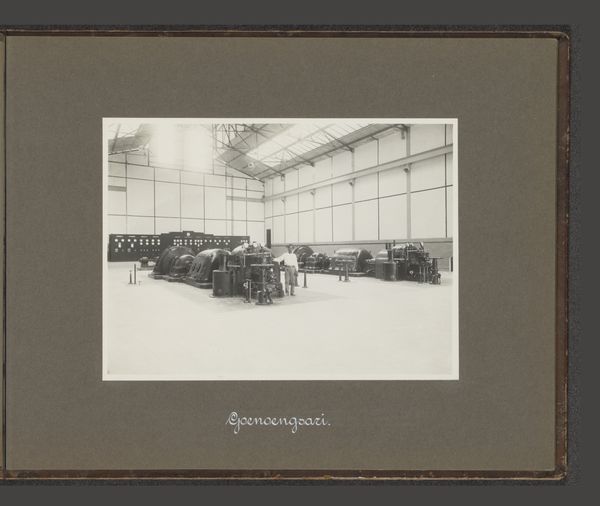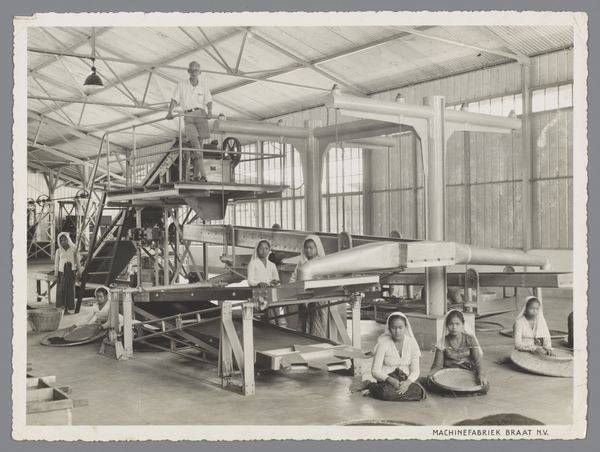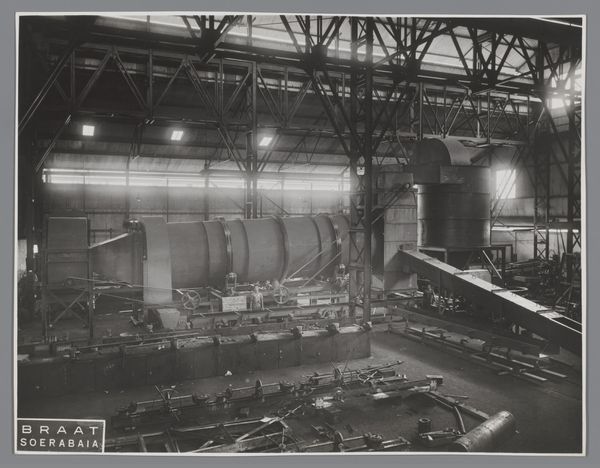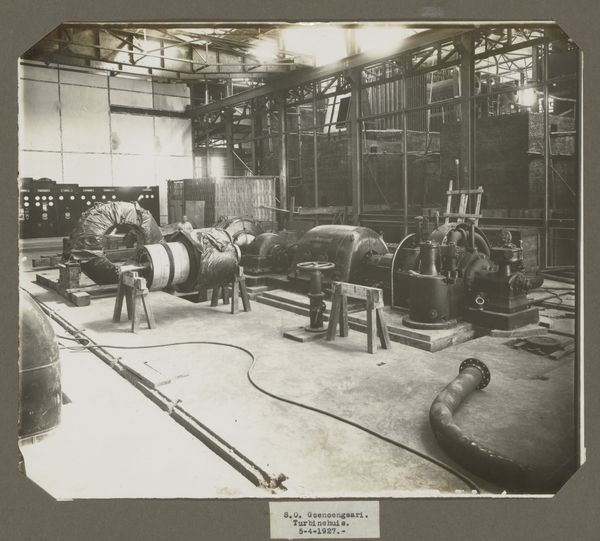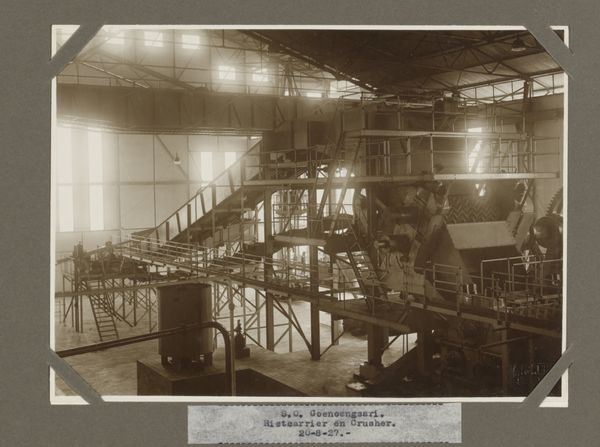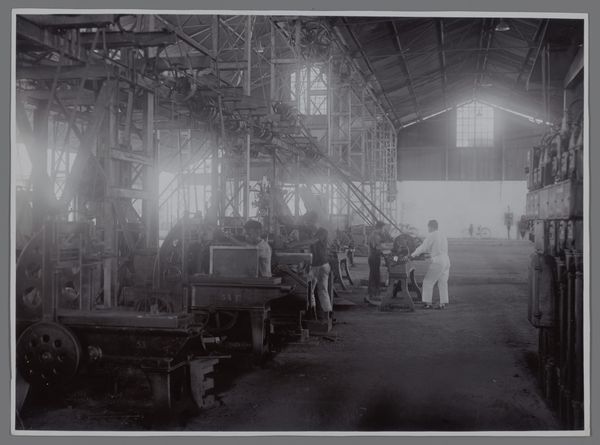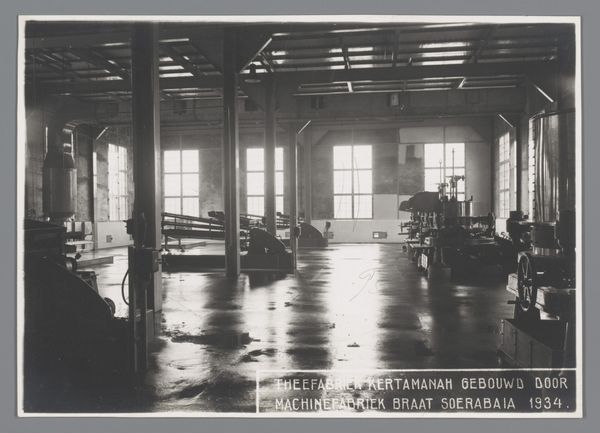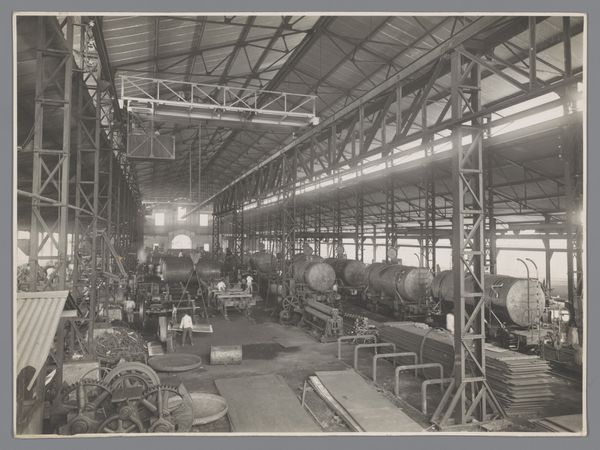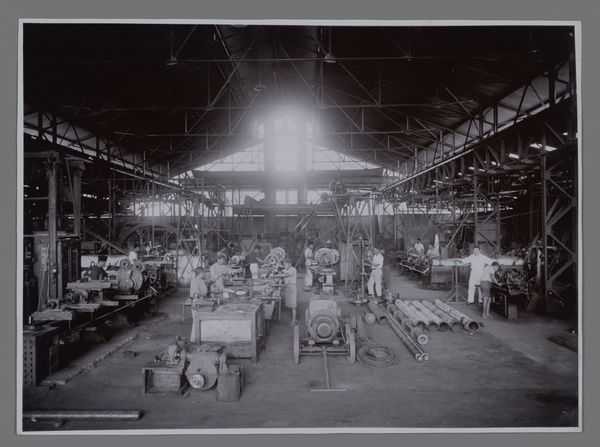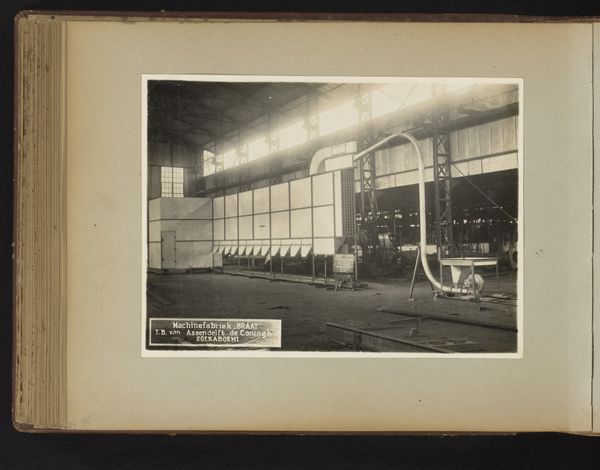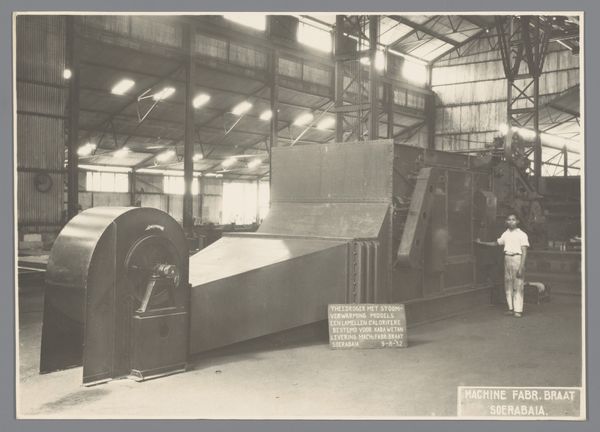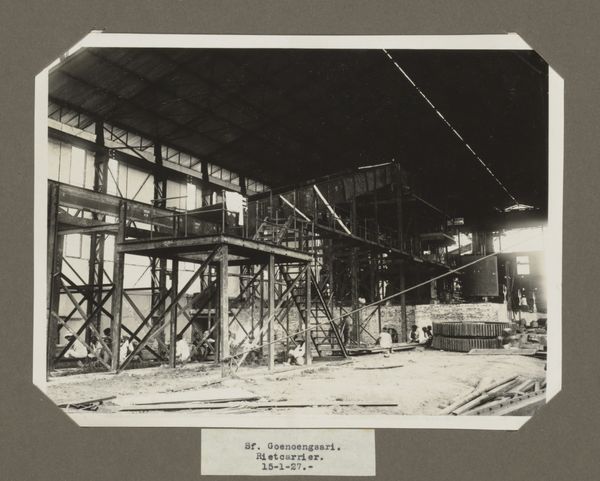
photography
#
archive photography
#
photography
#
cityscape
#
modernism
Dimensions: height 166 mm, width 231 mm
Copyright: Rijks Museum: Open Domain
Curator: Editor: So, this photograph, “S.O. Goenoengsari. Turbinehuis. 20-8-27.” dated around 1927, seems to show the interior of a power plant. The scale is really striking. It feels…almost sterile. What aspects of the materials and labor catch your eye here? Curator: Well, considering it’s a photographic image, let's start there. Think about the industrialization of photography itself at this time. The increasing ease and availability of photographic processes meant images like this could be created not just for artistic purposes, but also as documentation, promotion, or even surveillance. The turbine itself…it embodies progress and control. How might the labor involved in constructing and operating these machines reflect colonial power structures in Indonesia at this time? Editor: That’s a powerful point about colonial labor. The scale does seem to emphasize the might of the technology. And I hadn’t thought about how the act of photographing itself might reinforce that power dynamic. The man standing by the machines, presumably an employee… his presence almost shrinks beside the machines. Does that read as alienation of labor to you? Curator: Absolutely. The figure's relation to the machinery illustrates a larger issue of human capital within this historical context. We must consider not only its visual presentation but the cultural significance in Indonesia. Also note the image of industry contrasted to local crafts that often carry deeper spiritual meanings and cultural identity. This photograph subtly positions imported industrialized technology as a superior advancement over more intrinsic creations. Does this power plant exist to supply an Indonesian population or perhaps instead to support exportation needs, driven by a different workforce and economy elsewhere? Editor: I hadn't considered it that way. I initially saw it as a straightforward image of progress. Thinking about who benefits from that progress changes everything. Thanks, this helps to unpack the cultural complexities embedded in even what appears to be a simple industrial scene. Curator: Exactly, and remember, questioning who benefits from the production and consumption of art and technology is essential to understanding its true significance.
Comments
No comments
Be the first to comment and join the conversation on the ultimate creative platform.
